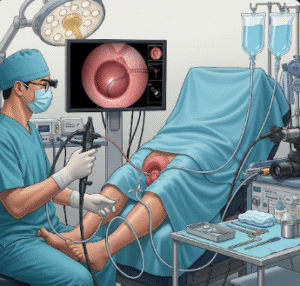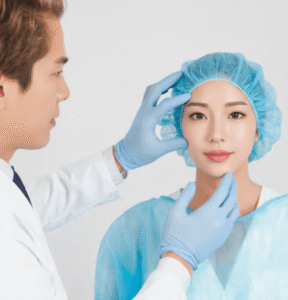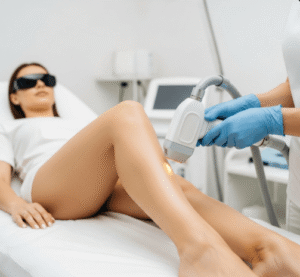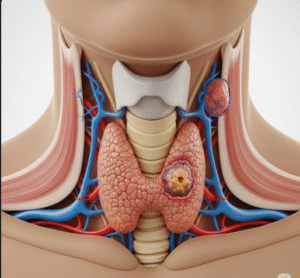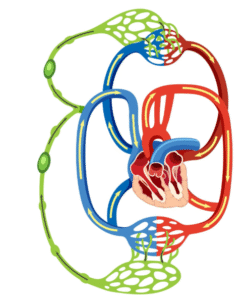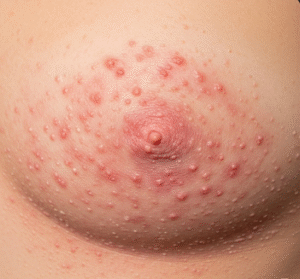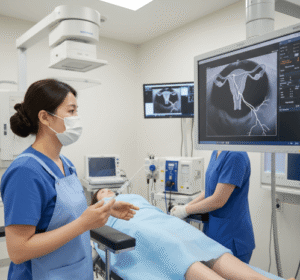What It Is
Nose reconstruction after Mohs surgery is a reconstructive procedure to restore the nasal structure and appearance following the removal of skin cancer (commonly basal cell carcinoma or squamous cell carcinoma). Mohs surgery is highly effective in clearing cancer but can leave defects in the nasal skin, cartilage, or deeper tissues.
In Korea, nose reconstruction is performed using local flaps, skin grafts, cartilage grafting, and microsurgical techniques to rebuild the nose while preserving its natural contour and breathing function.
Why It’s Done
Patients undergo nose reconstruction after Mohs surgery because:
- The procedure leaves a visible nasal defect affecting appearance.
- Functional issues such as nasal obstruction or collapse may occur if cartilage is involved.
- Patients want to restore confidence and normal facial harmony.
- Proper reconstruction ensures both cancer clearance and aesthetic restoration.
Good candidates include:
- Patients who have completed Mohs surgery for nasal skin cancer.
- Individuals in good health, without uncontrolled medical conditions.
- Those with realistic expectations about results and possible scarring.
Alternatives
- Secondary intention healing: Allowing small wounds to heal naturally, though often resulting in visible scarring.
- Skin grafts alone: Suitable for superficial defects but may not match nasal contour or texture.
- No reconstruction: Rarely chosen, as nasal deformity can be both functional and aesthetic.
Preparation
Before nose reconstruction in Korea, patients will:
- Have a full consultation and defect evaluation (including depth and size).
- Undergo imaging or photography for surgical planning.
- Stop smoking and alcohol 2–4 weeks before surgery.
- Avoid blood-thinning medications and supplements.
How It’s Done
- Anesthesia: Local anesthesia with sedation or general anesthesia, depending on defect size.
- Reconstruction techniques depend on defect:
- Primary closure: Direct suturing for very small defects.
- Local flaps (bilobed, nasolabial, or forehead flap): Use nearby skin to cover the defect with excellent color/texture match.
- Skin grafts: Taken from another site if local tissue is insufficient.
- Cartilage grafting: From septum, ear, or rib to rebuild nasal support.
- Microsurgical free flaps: For large or complex cases.
- Duration: 2–6 hours depending on complexity.
Recovery
- First week: Swelling, bruising, and mild discomfort; splints or dressings may be applied.
- Return to activities: Light duties in 7–10 days; avoid strenuous activity for 4–6 weeks.
- Final results: Natural nasal contour and improved function achieved within 2–3 months.
Possible Complications
- Scarring or asymmetry.
- Partial flap or graft loss.
- Infection or delayed healing.
- Nasal obstruction or breathing difficulty if internal structures are affected.
- Pigmentation or texture differences in grafted skin.
Treatment Options in Korea
Diagnosis
Korean surgeons use clinical evaluation, histopathology reports, and imaging if necessary to design an individualized reconstruction plan.
Medical Treatments
- Scar creams, silicone sheets, or steroid injections for minor post-surgical scars.
- Non-surgical camouflage techniques for very small defects.
Surgical or Advanced Therapies
- Primary closure for tiny defects.
- Bilobed or nasolabial flaps for small-to-moderate nasal defects.
- Forehead flap reconstruction for larger or central nasal defects.
- Cartilage grafting to restore nasal structure and support.
- Microsurgical free flaps in extensive or complex reconstructions.
Rehabilitation and Support
- Scar management with silicone gels, microneedling, or laser.
- Long-term follow-up to check both cosmetic outcomes and cancer recurrence.
- Guidance on skin protection and rosacea/cancer care.
- International patients benefit from Korea’s expertise in oncologic reconstruction, precision flap design, and aesthetic-focused surgical planning.


